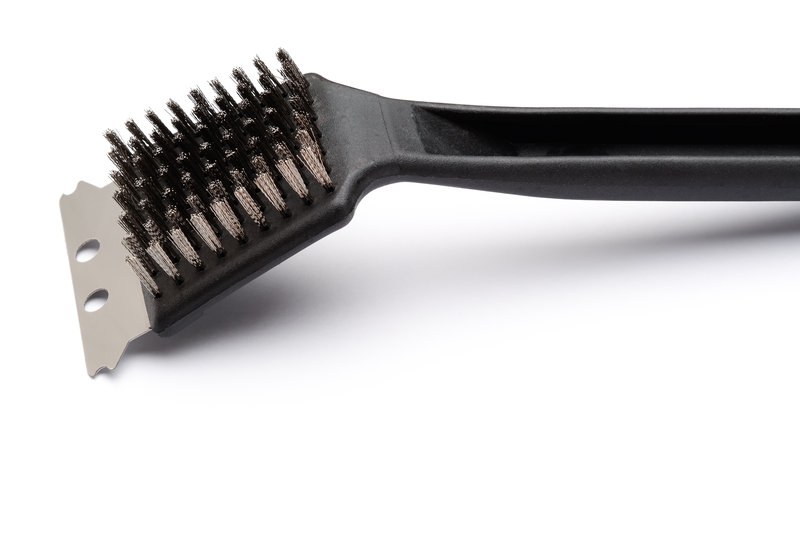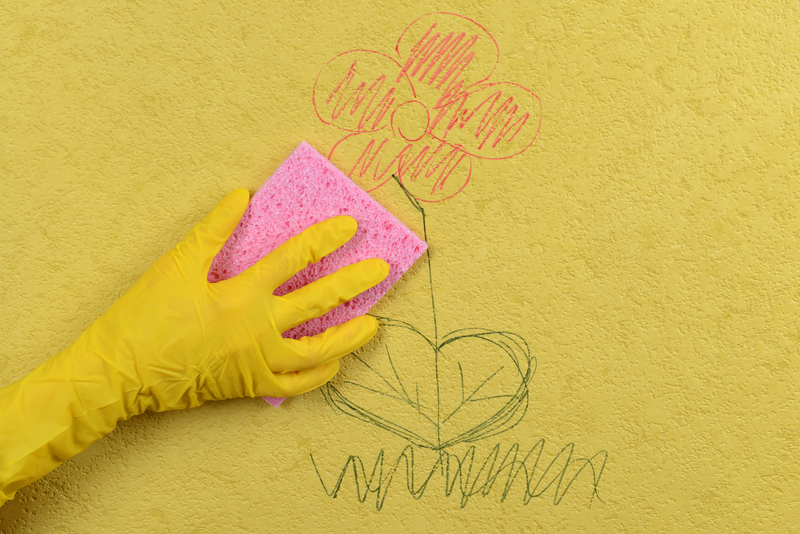Mastering the Art of Creating an Effective Housekeeping Plan
Posted on 03/06/2025
Mastering the Art of Creating an Effective Housekeeping Plan
A spotless, organized space doesn't just happen--it's the result of deliberate, strategic, and sustained efforts. If you're seeking to elevate the standards of cleanliness, safety, and productivity in your home or workplace, developing an effective housekeeping plan is vital. Mastering the art of creating a thorough housekeeping plan empowers you to maintain an environment that's both visually appealing and functionally efficient.
Why Is a Housekeeping Plan Essential?
Housekeeping goes beyond surface cleaning--it encompasses all activities that promote orderliness, safety, and hygiene in any setting. Whether you manage a bustling office, a manufacturing plant, or simply want a more organized home, a tailored housekeeping plan brings substantial benefits, such as:
- Increased Productivity: Well-maintained spaces allow for smoother operations and quicker access to materials.
- Healthier Atmosphere: Reduces allergens, bacteria, and the risk of illness.
- Enhanced Safety: Minimizes slip, trip, and fall hazards by keeping walkways clear and surfaces clean.
- Positive Impression: Offers a welcoming atmosphere for clients, guests, or family members.
- Longevity of Assets: Regular cleaning and maintenance prolong the life of furniture, equipment, and facilities.

Key Elements of an Effective Housekeeping Plan
Every successful housekeeping plan shares several foundational elements. Understanding these will set the stage for developing a comprehensive program that suits your unique needs.
1. Assessment and Analysis
Start by evaluating your space. Identify high-traffic areas, problem spots, and items that require special care. Consider these questions:
- Which areas get dirty quickly?
- Are there any recurring safety issues?
- What cleaning products work best for specific surfaces?
- Are there local regulations or industry standards to follow?
2. Setting Goals and Standards
Establish clear, measurable objectives for your housekeeping plan so everyone knows what's expected. Examples include:
- Daily desk clearings in offices
- Weekly deep cleaning schedules
- Monthly equipment inspections
Set standards for cleaning frequency, quality, and safety to ensure consistency across all tasks.
3. Comprehensive Task Lists
An effective cleaning plan breaks down duties according to frequency:
- Daily tasks: Trash disposal, sweeping, and restroom checks
- Weekly tasks: Dusting, mopping, and replenishing supplies
- Monthly tasks: Window cleaning, HVAC filter checks, and equipment maintenance
Write detailed descriptions for each task to remove ambiguity and boost accountability.
4. Roles and Responsibilities
Assign specific cleaning duties to individuals or teams. This clarity improves coordination and prevents oversights.
- Who vacuums and when?
- Who checks safety equipment?
- Who manages cleaning supplies inventory?
5. Resource Planning
Compile a list of required cleaning agents, equipment, and PPE (personal protective equipment). Regularly monitor supply levels to avoid shortages.
6. Training and Motivation
Training is essential for teaching the correct use of chemicals, machinery, and best practices. Regular training sessions keep staff updated and motivated.
7. Monitoring and Continuous Improvement
Regular audits and feedback help you spot weaknesses and revise your plan as needed. Continuous improvement ensures your housekeeping program remains effective and up-to-date.
How to Develop a Housekeeping Plan: Step-by-Step Guide
Implementing a successful housekeeping strategy requires a systematic approach. Follow these steps to build and optimize your own plan:
Step 1: Conduct a Thorough Walkthrough
- Walk through each area and make detailed notes.
- Photograph problem areas for reference.
- Consult with employees or family members to get their input.
Step 2: Identify and Prioritize Tasks
Use your walkthrough findings to list every cleaning activity required. For each task:
- Determine frequency: daily, weekly, monthly, quarterly, annually
- Assess urgency and importance
- Classify tasks by area (kitchen, restrooms, offices, outdoor spaces, etc.)
Step 3: Develop Detailed Checklists
Checklists make your cleaning plan actionable. Digitize them for easy access and updating. Example:
- Empty waste bins
- Disinfect doorknobs and switches
- Wipe down computers and phones
- Replenish soap and sanitizers
Step 4: Assign Duties and Train Staff
Clearly communicate each employee's role and provide training where needed.
- Cover chemical safety.
- Demonstrate correct cleaning procedures.
- Review emergency protocols.
Step 5: Monitor Progress and Evaluate Effectiveness
Schedule regular inspections and collect feedback. Adjust your plan based on:
- Cleaning audit results
- Employee or resident suggestions
- Changing operational requirements
Continuous evaluation keeps your plan agile and effective.
Essential Tools and Products for Superior Housekeeping
Equipping your team with the right cleaning equipment and products is fundamental. An efficient housekeeping plan should include:
- Multipurpose cleaners for versatile use
- Disinfectants for high-touch surfaces
- High-quality mops, brooms, and vacuums
- Microfiber cloths for dusting and polishing
- Personal protective equipment (gloves, masks, aprons)
- Organized storage solutions
Store chemicals safely and label all cleaning products clearly to prevent accidents.
Digital Tools for Modern Housekeeping Management
Technology can dramatically improve your housekeeping plan's efficiency. Popular digital solutions include:
- Cleaning scheduling apps (assign tasks and track completion)
- Digital checklists (ensure nothing is overlooked)
- Inventory management platforms (monitor supply levels in real time)
- Feedback and reporting tools (easily collect and act on input)
Leverage these platforms to streamline communication, scheduling, and monitoring for a more robust housekeeping plan.
Compliance and Safety: Non-Negotiables in Housekeeping
Safety is the cornerstone of any effective housekeeping plan. To maintain a compliant and secure environment:
- Adhere to Occupational Safety and Health Administration (OSHA) regulations or local guidelines.
- Ensure correct storage and labeling of chemicals.
- Institute spill response and emergency protocols.
- Display safety signage as needed.
- Provide periodic refresher training on safety issues.
Remember: A safe, healthy environment is the result of ongoing vigilance and systematic planning.
Environmental Considerations in Your Housekeeping Plan
*Sustainability* is increasingly important in all aspects of facility management. Consider these eco-friendly practices when designing your housekeeping program:
- Choose non-toxic, biodegradable cleaners whenever possible.
- Implement recycling and waste reduction initiatives.
- Optimize water and electricity use during cleaning.
- Encourage the use of reusable cleaning cloths and mop heads.
- Monitor and reduce unnecessary packaging from supplies.
Integrating green policies demonstrates your commitment to environmental stewardship and can even reduce costs over time.
Common Pitfalls to Avoid in Housekeeping Planning
No matter how well-intentioned, some plans fail to deliver. Watch out for these typical mistakes:
- Ignoring high-touch or high-traffic areas
- Lack of training and unclear instructions
- Poor communication between staff
- Inadequate supply management
- Irregularly updating the plan to reflect actual needs
- Failing to monitor and act on feedback
Periodic reviews and open channels for feedback help eliminate these issues and keep your program on track.
Sample Template: Effective Housekeeping Plan
Creating a comprehensive housekeeping plan is easier when you have a template to guide you. Here's a basic structure you can adapt:
- Objective: To maintain a safe, clean, and orderly environment at all times.
- Scope: All common and personal areas (specify which ones)
- Personnel: List names, roles, and contact details
- Frequency: Daily, weekly, monthly, as appropriate for each task
- Tasks: Clear checklists for every area and surface
- Supplies & Equipment: Inventory and storage location
- Safety Procedures: PPE, chemical handling, emergency contacts
- Recordkeeping: Logs for cleaning activity and inspections
- Review Schedule: Dates for audits and updates
Customize each field according to the unique needs of your space for the most effective results.

Pro Tips for Mastering Your Housekeeping Plan
- Review and update your plan regularly to reflect changes in use, occupancy, or local regulations.
- Engage all stakeholders--from staff to residents--in feedback and improvement processes.
- Celebrate successes and maintain morale through incentives or recognition for exceptional effort.
- Utilize color-coded cleaning tools to avoid cross-contamination.
- Never overlook training--regular refreshers are key.
Conclusion: Achieve Excellence with an Effective Housekeeping Plan
The art of mastering a cleaning and housekeeping plan is achieved through thoughtful preparation, detailed execution, continuous monitoring, and a persistent drive for improvement. A well-crafted housekeeping plan not only delivers pristine surroundings but also boosts morale, productivity, and safety in any space.
Investing the time and resources to create, implement, and refine your housekeeping plan pays invaluable dividends. Adopt these strategies--and experience the transformative impact of a truly effective cleaning program.
Start today, and watch your environment--and your peace of mind--shine!


